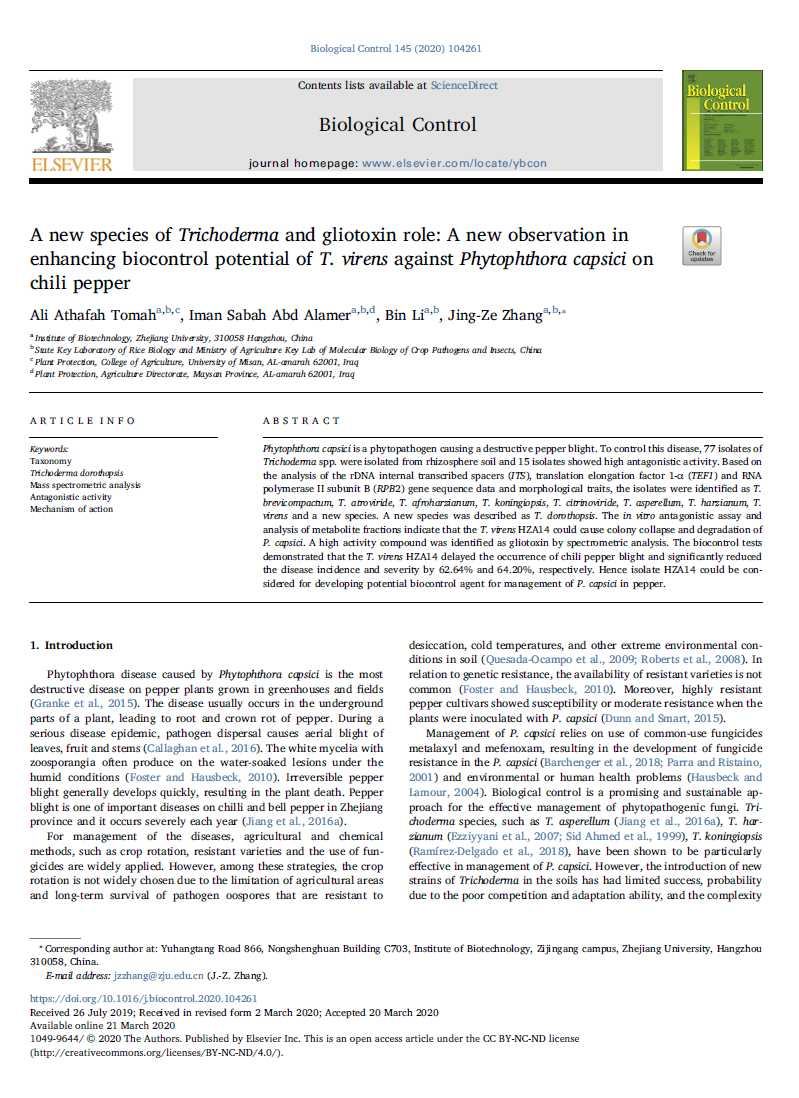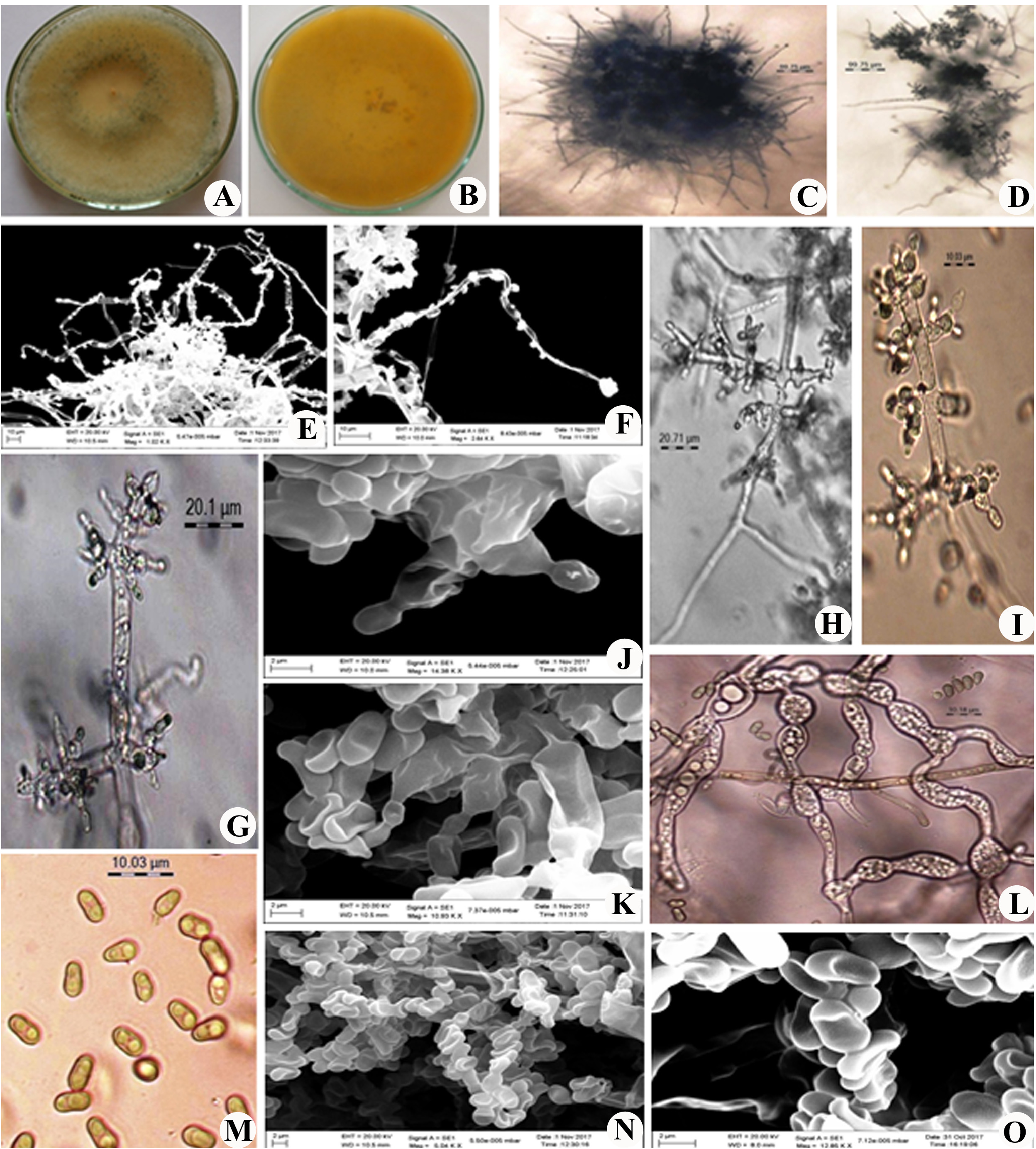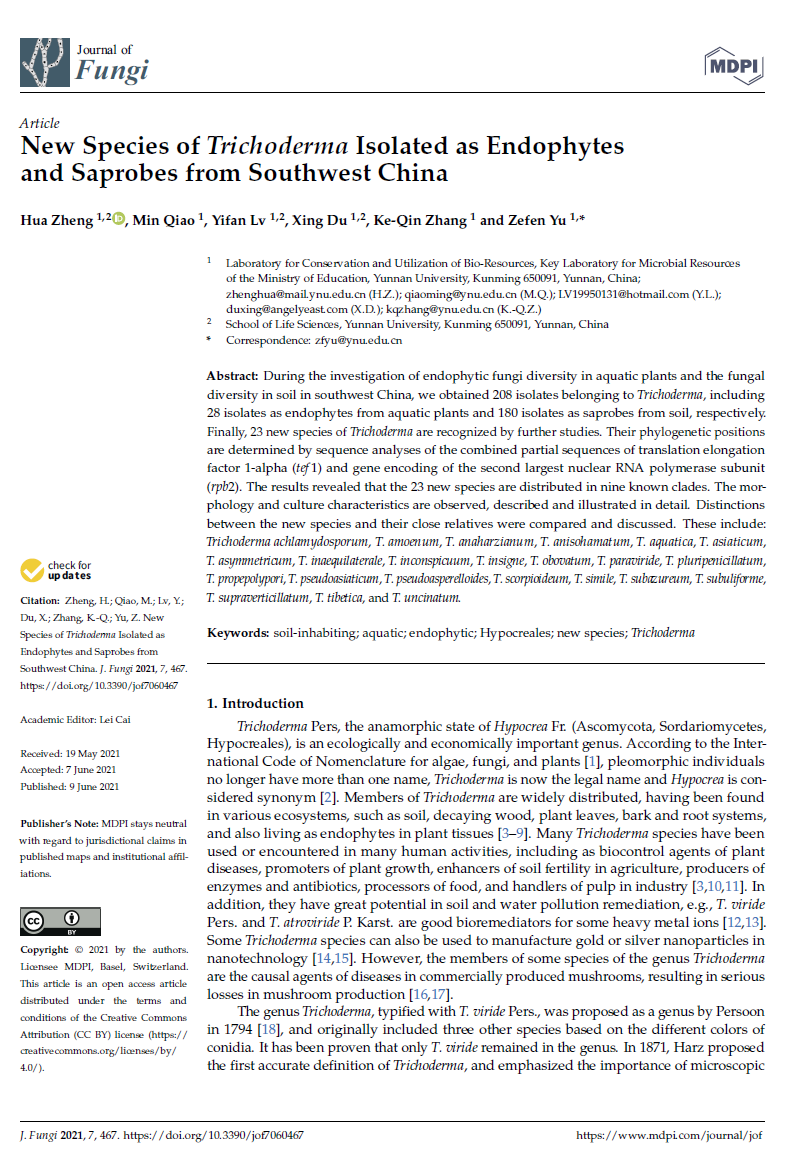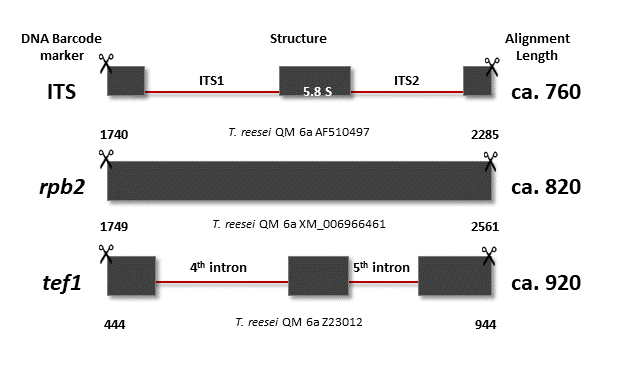Athafah Tomah et al., 2020 A new species of Trichoderma and gliotoxin role: A new observation in enhancing biocontrol potential of T. virens against Phytophthora capsici on chili pepper, Biological Control
Abstract
Phytophthora capsici is a phytopathogen causing a destructive pepper blight. To control this disease, 77 isolates of Trichoderma spp. were isolated from rhizosphere soil and 15 isolates showed high antagonistic activity. Based on the analysis of the rDNA internal transcribed spacers (ITS), translation elongation factor 1-α (TEF1) and RNA polymerase II subunit B (RPB2) gene sequence data and morphological traits, the isolates were identified as T. brevicompactum, T. atroviride, T. afroharzianum, T. koningiopsis, T. citrinoviride, T. asperellum, T. harzianum, T. virens and a new species. A new species was described as T. dorothopsis. The in vitro antagonistic assay and analysis of metabolite fractions indicate that the T. virens HZA14 could cause colony collapse and degradation of P. capsici. A high activity compound was identified as gliotoxin by spectrometric analysis. The biocontrol tests demonstrated that the T. virens HZA14 delayed the occurrence of chili pepper blight and significantly reduced the disease incidence and severity by 62.64% and 64.20%, respectively. Hence isolate HZA14 could be considered for developing potential biocontrol agent for management of P. capsici in pepper.





No comments! Be the first commenter?